Hip Fascia: Tensor Fascia Lata – Physiopedia
What is the structure and function of the fascia of the hip and thigh? How are the different types of fascia related to clinical conditions? Explore the details in this comprehensive article.
Fascia of the Hip and Thigh: Anatomy
Fascia is a band of connective tissue located beneath the skin, which encloses and separates muscles. There are two main types of fascia: superficial and deep. The superficial fascia is attached to the dermis and aids in movement of the skin. The deep fascia is denser than its superficial counterpart and forms intermuscular septa, which are involved in the formation of muscular compartments.
Superficial Fascia
The superficial fascia of the hip and thigh is continuous with the fascia of the lower back posteriorly and the fascia of the abdominal region anteriorly. This fascia consists of loose areolar and adipose tissue. In the inguinal region, this fascia splits into two layers to enclose the long saphenous vein and superficial inguinal lymph nodes. The superficial fascia is referred to as the cribriform fascia, as it is perforated by the long saphenous vein, lymphatic vessels and by superficial branches of the femoral vein.

Deep Fascia
The deep fascia of the hip is thin over the gluteus maximus muscle but thickens over the anterior two-thirds of the gluteus medius muscle to form a strong aponeurosis. This aponeurosis is attached to the lateral aspect of the iliac crest and splits into two parts to enclose the tensor fascia latae and gluteus maximus muscles. The deep fascia is attached anteriorly to the inguinal ligament and the superior ramus of the pubis. Posteriorly it is attached to the sacrum and coccyx bones. Medially, it is attached to the inferior pubic ramus and to the lower aspect of the sacrotuberous ligament as well as to the ramus and tuberosity of the ischium.
Fascia Lata
The fascia lata, the deep fascia of the thigh, varies in thickness and is continuous with the deep fascia of the hip. It is thicker in the proximal and lateral aspects of the thigh where it attaches to the gluteus maximus and tensor fasciae latae muscles. It is also thick around the knee joint. Over the adductor muscles and posterior aspect of the thigh, the fascia lata is thinner.

Iliotibial Tract
On the lateral aspect of the thigh, the fascia lata thickens to form the iliotibial tract. Superiorly, the iliotibial tract splits into a superficial and a deep layer. The superficial layer is attached to the iliac crest and descends lateral to the tensor fasciae latae muscle. The deep layer is medial to this muscle and blends with the capsule of the hip joint. Distally, the iliotibial tract blends with the aponeurosis of the vastus lateralis muscle before it attaches to Gerdy’s tubercle, which is located on the anterolateral surface of the lateral tibial condyle.
Intermuscular Septa
There are two intermuscular septa formed by the fascia lata and these septa form the anterior, posterior and medial compartments of the thigh. These septa are referred to as the medial and lateral septum. The medial septum is thinner and weaker than the lateral one. It lies between the vastus medialis anteriorly and the adductor and pectineus muscles posteriorly. The lateral septum descends from the gluteus maximus muscle to the lateral condyle of the femur and lies between the vastus lateralis and the short head of the biceps femoris muscle. Both of these septa are attached to the linea aspera of the femur.

Saphenous Opening
In the deep fascia, there is an opening 3 cm lateral to the pubic tubercle, which allows the passage of the long saphenous vein. This aperture, referred to as the saphenous opening, is covered by the superficial fascia and is located inferomedial to the superficial stratum of the fascia lata. It is located lateral to the deep stratum and its superior, inferior and lateral borders are formed by the arched falciform margin.
Iliac Fascia
The iliac fascia covers the iliacus muscle and forms the floor of the femoral sheath. It is attached superiorly to the iliac crest and inferiorly to the inguinal ligament. The iliac fascia continues inferiorly to form the posterior wall of the femoral sheath.
The fascia of the hip and thigh plays a crucial role in the movement and function of the lower limb. Understanding the anatomy and variations of these fasciae is important for both clinicians and researchers, as they can be involved in various pathological conditions such as iliotibial band friction syndrome, eosinophilic fasciitis, and complications related to femoral vein cannulation.

Fasciae of the hip and thigh: Anatomy
Author:
Charlotte O’Leary BSc, MBChB
•
Reviewer:
Latitia Kench
Last reviewed: July 19, 2022
Reading time: 8 minutes
Fascia is a band of connective tissue located beneath the skin, which encloses and separates muscles. There are two main types of fascia: superficial and deep. The superficial fascia is attached to the dermis and aids in movement of the skin. The deep fascia is denser than its superficial counterpart and forms intermuscular septa, which are involved in the formation of muscular compartments. This article will talk about the structure and function of the fasciae of the hip and thigh, followed by any related clinical pathology.
Contents
- Superficial fascia
- Deep fascia
- Fascia lata
- Iliotibal tract
- Intermuscular septa
- Saphenous opening
- Iliac fascia
- Femoral sheath
- Clinical notes
- Iliotibial band friction syndrome
- Eosinophilic fasciitis
- Femoral vein cannulation
- Sources
+ Show all
vimeo.com/video/256802944″>
Superficial fascia
The superficial fascia of the hip and thigh is continuous with the fascia of the lower back posteriorly and the fascia of the abdominal region anteriorly. This fascia consists of loose areolar and adipose tissue. In the inguinal region, this fascia splits into two layers to enclose the long saphenous vein and superficial inguinal lymph nodes. The superficial fascia is referred to as the cribriform fascia, as it is perforated by the long saphenous vein, lymphatic vessels and by superficial branches of the femoral vein.
Deep fascia
The deep fascia of the hip is thin over the gluteus maximus muscle but thickens over the anterior two-thirds of the gluteus medius muscle to form a strong aponeurosis. This aponeurosis is attached to the lateral aspect of the iliac crest and splits into two parts to enclose the tensor fascia latae and gluteus maximus muscles.
The deep fascia is attached anteriorly to the inguinal ligament and the superior ramus of the pubis. Posteriorly it is attached to the sacrum and coccyx bones. Medially, it is attached to the inferior pubic ramus and to the lower aspect of the sacrotuberous ligament as well as to the ramus and tuberosity of the ischium.
Fascia lata
The fascia lata, the deep fascia of the thigh, varies in thickness and is continuous with the deep fascia of the hip. It is thicker in the proximal and lateral aspects of the thigh where it attaches to the gluteus maximus and tensor fasciae latae muscles. It is also thick around the knee joint. Over the adductor muscles and posterior aspect of the thigh, the fascia lata is thinner.
Fascia lata (anterior view)
The fascia lata is split into two layers, which are referred to as the superficial stratum and the deep stratum. The superficial stratum reflects inferolaterally from the pubic tubercle to form the arched falciform margin. Distally, the fascia lata attaches to the head of the fibula as well as to the tibial and femoral condyles. There are three modifications of the fascia lata, which are known as the:
The superficial stratum reflects inferolaterally from the pubic tubercle to form the arched falciform margin. Distally, the fascia lata attaches to the head of the fibula as well as to the tibial and femoral condyles. There are three modifications of the fascia lata, which are known as the:
- Iliotibial tract
- Intermuscular septa
- Saphenous opening
Iliotibal tract
On the lateral aspect of the thigh, the fascia lata thickens to form the iliotibial tract. Superiorly, the iliotibial tract splits into a superficial and a deep layer. The superficial layer is attached to the iliac crest and descends lateral to the tensor fasciae latae muscle. The deep layer is medial to this muscle and blends with the capsule of the hip joint. Distally, the iliotibial tract blends with the aponeurosis of the vastus lateralis muscle before it attaches to Gerdy’s tubercle, which is located on the anterolateral surface of the lateral tibial condyle.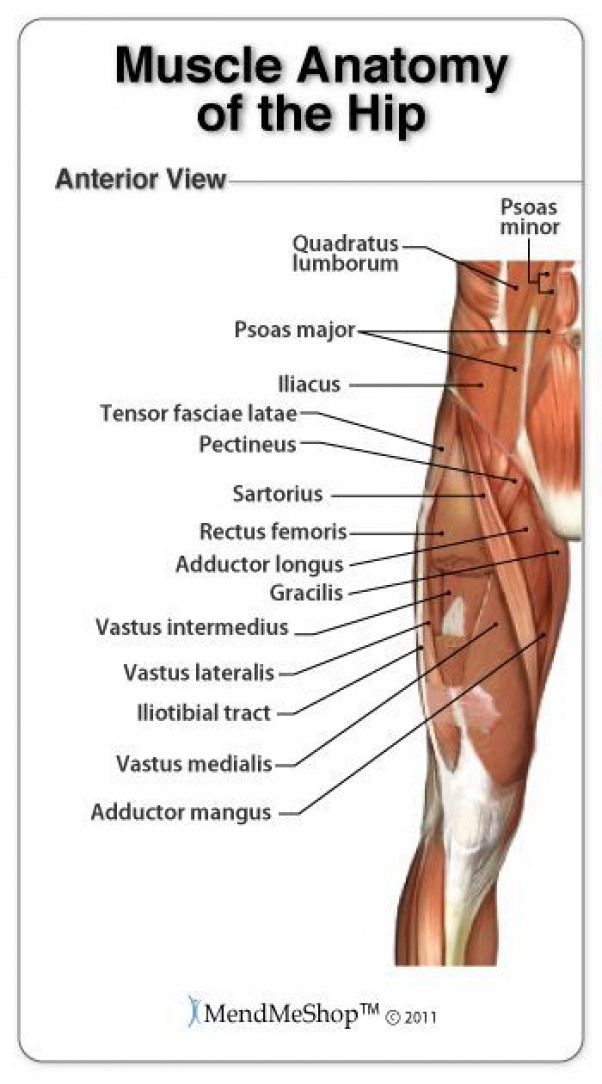
Intermuscular septa
There are two intermuscular septa formed by the fascia lata and these septa form the anterior, posterior and medial compartments of the thigh. These septa are referred to as the medial and lateral septum.
The medial septum is thinner and weaker than the lateral one. It lies between the vastus medialis anteriorly and the adductor and pectineus muscles posteriorly. The lateral septum descends from the gluteus maximus muscle to the lateral condyle of the femur and lies between the vastus lateralis and the short head of the biceps femoris muscle. Both of these septa are attached to the linea aspera of the femur.
Saphenous opening
In the deep fascia, there is an opening 3 cm lateral to the pubic tubercle, which allows the passage of the long saphenous vein. This aperture, referred to as the saphenous opening, is covered by the superficial fascia and is located inferomedial to the superficial stratum of the fascia lata. It is located lateral to the deep stratum and its superior, inferior and lateral borders are formed by the arched falciform margin.
It is located lateral to the deep stratum and its superior, inferior and lateral borders are formed by the arched falciform margin.
Iliac fascia
The iliac fascia covers the psoas major and iliacus muscles. It thickens as it descends towards the inguinal ligament. Superiorly, the part covering the psoas major muscle thickens as the medial arcuate ligament. Medially, fibrous arches attach the fascia to the upper part of the sacrum and to the lower lumbar intervertebral discs and vertebral bodies. The fascia blends with the quadratus lumborum fascia superior to the iliac crest and with the fascia covering the iliacus posterior to the crest.
Iliac fascia (anterior view)
The part of the fascia that covers the iliacus muscle is connected to the iliac crest laterally and the pelvic brim medially. The fascia, located between the external iliac vessels and the branches of the lumbar plexus, is separated from the peritoneum by loose extraperitoneal tissue. Medially, the fascia descends posterior to the femoral vessels to become the pectineal fascia. The iliac part forms a septum between the hip-bone and the inguinal ligament, forming a vascular space medially and a muscular space laterally. The psoas major, iliacus and femoral nerve are located within the muscular space whereas the vascular space contains the femoral vessels.
Medially, the fascia descends posterior to the femoral vessels to become the pectineal fascia. The iliac part forms a septum between the hip-bone and the inguinal ligament, forming a vascular space medially and a muscular space laterally. The psoas major, iliacus and femoral nerve are located within the muscular space whereas the vascular space contains the femoral vessels.
Femoral sheath
The femoral sheath is a funnel-shaped continuation of the transversalis fascia and the iliac fascia and consists of three compartments. The lateral compartment contains the femoral artery whilst the femoral vein is located in the intermediate compartment. The medial compartment, the femoral canal, consists of lymphatic vessels, is 2.5 cm long and allows distension of the femoral vein. The proximal end of the canal, the femoral ring, consists of extraperitoneal tissue and is larger in women. This is because females have a wider pelvis and have smaller femoral vessels.
This is because females have a wider pelvis and have smaller femoral vessels.
Clinical notes
Iliotibial band friction syndrome
Iliotibial Band Friction Syndrome (IBFS), an overuse syndrome, usually results in pain on the lateral aspect of the knee joint. Vigorous exercise can cause the iliotibial band to become tight or overstressed, which results in increased friction between it and the underlying lateral femoral epicondyle. Treatment involves a reduction in exercise and if this is unsuccessful, surgical resection of the posterior aspect of the iliotibial band.
Eosinophilic fasciitis
Eosinophilic Fascitis, or Shulman Syndrome, is a rare disorder, which can cause inflammation and fibrosis of fascia as well as an increase in eosinophils. Symptoms include swelling over the affected fascia and inflammatory arthritis. In nearly half of patients, these symptoms begin after an episode of strenuous exercise. Corticosteroids and immunosuppresants are used to treat this disease.
Corticosteroids and immunosuppresants are used to treat this disease.
Femoral vein cannulation
Knowledge of the anatomy of the femoral sheath is essential when inserting a cannula into the femoral vein. In emergency situations, femoral vein cannulation is one of the most common methods used to gain central venous access, which allows administration of medications and monitoring of central venous pressure. The mneumonic NAVEL is commonly used to remember the contents of the femoral sheath from a lateral to medial direction:
-
N – nerve -
A – artery -
V – vein -
E – empty space -
L – lymphatics
Good anatomical knowledge ensures that the femoral artery and nerve are not damaged.
Sources
All content published on Kenhub is reviewed by medical and anatomy experts.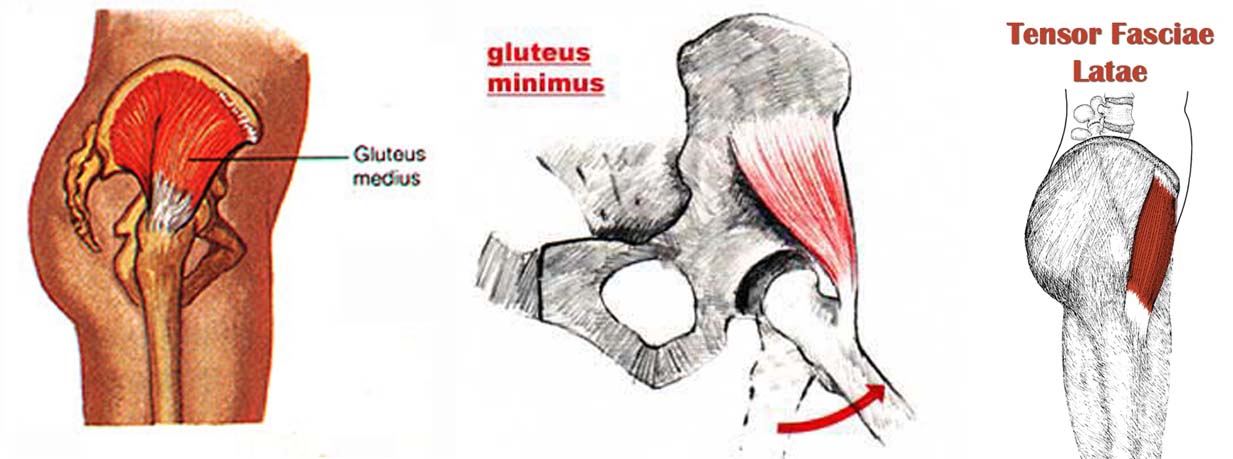 The information we provide is grounded on academic literature and peer-reviewed research. Kenhub does not provide medical advice. You can learn more about our content creation and review standards by reading our content quality guidelines.
The information we provide is grounded on academic literature and peer-reviewed research. Kenhub does not provide medical advice. You can learn more about our content creation and review standards by reading our content quality guidelines.
References:
-
N. Pal: Femoral Central Venous Access. Medscape. (accessed 18/06/2015) -
P. M. Henning: Eosinophilic Fasciitis. Mescape. (accessed 18/06/2015) -
S. J. Karageanes: Iliotibial Band Friction Syndrome. Medscape. (accessed 18/06/2015) -
S. Standring: Gray’s Anatomy The Anatomical Basis Of Clinical Practice, 40th Edition, Elsevier Health Sciences UK (2008), p.2443-6.
Illustrators:
- Fascia lata (anterior view) – Hannah Ely
- Iliac fascia (anterior view) – Hannah Ely
Fasciae of the hip and thigh: want to learn more about it?
Our engaging videos, interactive quizzes, in-depth articles and HD atlas are here to get you top results faster.
What do you prefer to learn with?
Videos
Quizzes
Both
“I would honestly say that Kenhub cut my study time in half.”
–
Read more.
Kim Bengochea, Regis University, Denver
© Unless stated otherwise, all content, including illustrations are exclusive property of Kenhub GmbH, and are protected by German and international copyright laws. All rights reserved.
Anatomy, Bony Pelvis and Lower Limb: Fascia Lata – StatPearls
Tucker Peabody; Bruno Bordoni.
Author Information and Affiliations
Last Update: August 8, 2022.
Introduction
The fascia lata (FL) is a fascial plane that surrounds the deep tissues of the thigh. It varies in thickness throughout its course from the hip to the leg. It receives fibers from gluteus maximus and tensor fascia lata (TFL) laterally. This arrangement could explain the often interchangeability with the (TFL) and the iliotibial band (ITB) colloquially. The TFL often serves as a landmark for surgical procedures, including anterior/anterolateral hip and femur procedures. [1] It functions as a lateral stabilizer to the knee and an abductor of the hip/thigh. The ITB is an extension of the tensor fascia, and it is redundant tissue in the lateral thigh compartment partially composed of the TFL. All of these components work synchronously to stabilize the lateral compartment of the thigh.
[1] It functions as a lateral stabilizer to the knee and an abductor of the hip/thigh. The ITB is an extension of the tensor fascia, and it is redundant tissue in the lateral thigh compartment partially composed of the TFL. All of these components work synchronously to stabilize the lateral compartment of the thigh.
Structure and Function
The fascia lata (FL) invests the entire length and width of the thigh but varies in thickness throughout. Its thicker portion is at the proximal and lateral portions of the thigh, where fibrous tissue from the gluteus maximus becomes integrated into the fascia lata. The FL extends medially where it invests the adductor muscles and again is strengthened at the knee. At the knee, the fascia lata receives a fibrous continuation from the biceps femoris tendon, from the sartorius and the quadriceps femoris. The FL is attached to the sacrum and coccyx posteriorly. Its lateral origins are from the iliac crest, the inguinal ligament, and the superior pubic ramus anteriorly. Medially and posteromedially, its origin is the inferior ramus of the pubis, ischial tuberosity, and the lower border of the sacrotuberous ligament. From its origin at the iliac crest, it passes over the gluteus medius to the upper border of the gluteus maximus.
Medially and posteromedially, its origin is the inferior ramus of the pubis, ischial tuberosity, and the lower border of the sacrotuberous ligament. From its origin at the iliac crest, it passes over the gluteus medius to the upper border of the gluteus maximus.
The fascia lata separates into two layers, traversing the gluteus maximus muscle deep and superiorly, and at the inferior border of the gluteus maximus, the fascia reunites. The lateral aspect of the fascia lata becomes integrated into the gluteus maximus. The anterolateral fascia lata and its corresponding origin of the TFL extend down the lateral aspect of the thigh as two distinct layers. One is the superficial layer, and the other is deep to the gluteus maximus muscle. At the distal end of the gluteus maximus, the two layers of the fascia lata become united, forming a thick band of fibrous tissue that is contiguous with the iliotibial band. The deep aspect of the fascia lata that is contiguous with the iliotibial band (ITB) also extends superiorly to join the lateral part of the capsule of the hip joint. [2]
[2]
The fascia lata is a complex layer of fibrous tissue that has several surgical and clinical implications in terms of surgical exposures and disorders involving the ITB, TFL, and gluteus maximus because of its integrated nature in anatomy and function. The FL attaches inferiorly to bony prominences around the knee joint, including the femoral and tibial condyles and the head of the fibula. Over the medial and lateral aspect of the patella, the fascia lata is strengthened by transverse fibers of the distal portions of all the quadriceps muscles, excluding the rectus femoris. These muscles insert into the patella via the quadriceps tendon and are all integrated with the FL. Traveling distally, the deep surface of the FL diverges into two intermuscular septa that attach at the linea aspera. The lateral intermuscular septum is the stronger of the two, and extends from the gluteus maximus to the femoral lateral condyle, separating the vastus lateralis anteriorly from the biceps femoris short head posteriorly. It gives partial origin to these muscles as well. The medial intermuscular septum is thinner and separates the vastus medialis from the adductor muscles. Multiple smaller septa function to separate the individual thigh muscles and cover the muscles superficially with fibrous tissue. Lastly, the deep fascia of the lower leg is a continuation of the FL. The tensor fasciae latae localizes within the anterior compartment of the thigh along with other femoral muscles, including pectineus, iliopsoas, quadriceps femoris, and the sartorius. The anterior thigh compartment muscles are innervated by the femoral nerve, which is supplied by the ventral rami of the L2-L4.[3][2]
It gives partial origin to these muscles as well. The medial intermuscular septum is thinner and separates the vastus medialis from the adductor muscles. Multiple smaller septa function to separate the individual thigh muscles and cover the muscles superficially with fibrous tissue. Lastly, the deep fascia of the lower leg is a continuation of the FL. The tensor fasciae latae localizes within the anterior compartment of the thigh along with other femoral muscles, including pectineus, iliopsoas, quadriceps femoris, and the sartorius. The anterior thigh compartment muscles are innervated by the femoral nerve, which is supplied by the ventral rami of the L2-L4.[3][2]
The orientation of the connective fibers is directed mainly in the longitudinal direction. The thickness of the fascia lata is slightly thicker in the male than in the female. There is also a difference in the gender of tension expressed. In the longitudinal direction, the force expressed is greater in men, but in the medial area of the fascia lata, there is greater tension in women, always with longitudinal traction.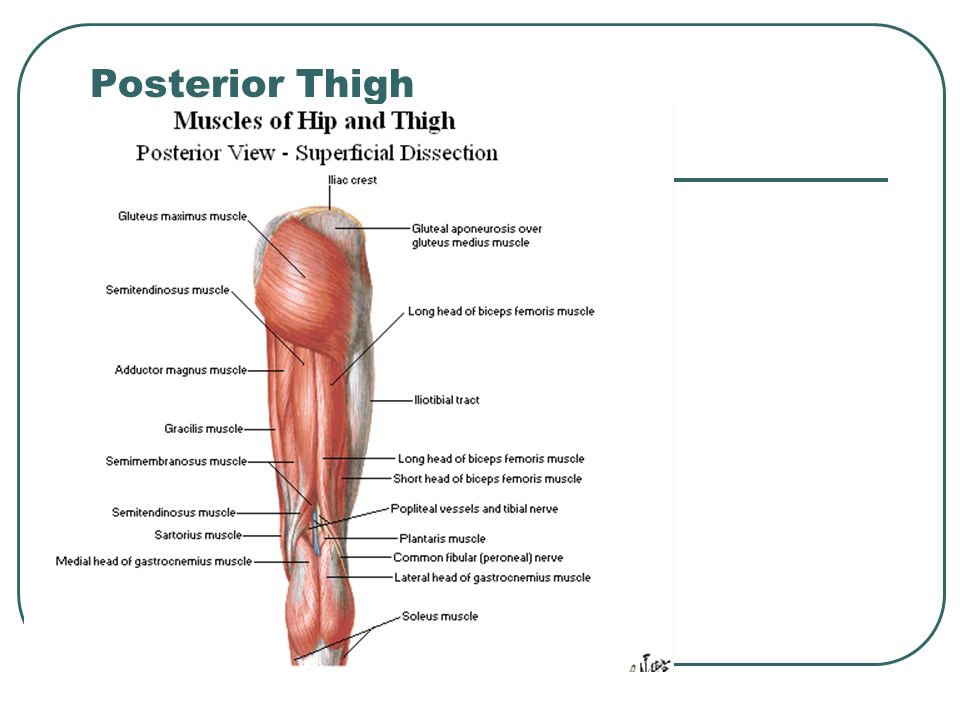
From a histological point of view, the tissue of the fascia lata is mainly composed of collagen fibers, a lower percentage of elastin within the ground substance, compared to other brands of the body (it has a denser structure). We find the extracellular matrix, which is the greatest presence in the fascia, fibroblasts, and mast cells. We find myofibroblasts and telocytes.
Embryology
The fascia lata derives from the fascia of the vastus lateralis muscle and derives from the embryological sheet of the mesoderm.
Blood Supply and Lymphatics
The tensor fasciae lata is mainly perfused by a deep perforating branch of the superior gluteal artery. The superior gluteal artery is a terminal branch of the internal iliac artery. The superior gluteal artery is the primary source of blood supply to the gluteus maximus muscle as well.[4]
The fascia lata, as it travels anteriorly to medially an opening, is formed known as the saphenous opening. This patency of the fascia lata allows for the great saphenous vein to pierce the cribriform fascia and traverse through the saphenous opening.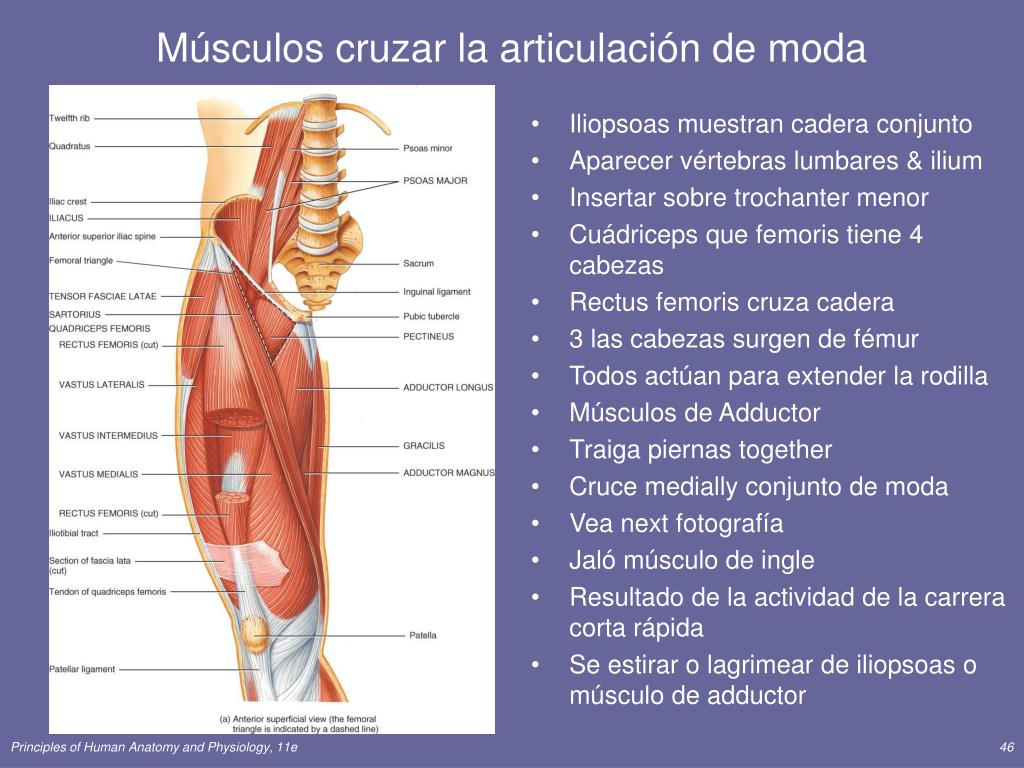 The great saphenous vein drains into the deep femoral vein bringing deoxygenated blood from the lower extremity.
The great saphenous vein drains into the deep femoral vein bringing deoxygenated blood from the lower extremity.
The descending branch of the lateral circumflex femoral artery brings blood to the fascia lata, in particular, is perforated at the level of the thigh, proximal.
Nerves
The tensor fascia latae, along with the iliotibial tract, is innervated by the superior gluteal nerve and the inferior gluteal nerve. The ventral rami of the L4-S1 nerve roots supply motor innervation via the superior gluteal nerve to these structures. The superior gluteal nerve is also the major nerve that innervates the gluteus medius and minimus muscles. L5-S2 ventral rami supply motor innervation to the inferior gluteal nerve, which also innervates the TFL and ITB along with the gluteus maximus muscle.[2]
The lumbosacral plexus also gives rise to multiple nerves that aid in the innervation of the fascia lata. The ilioinguinal nerve (L1), the femoral branch of the genitofemoral nerve (L1-L2), lateral femoral cutaneous nerve (L2-L3), and the cutaneous branch of the obturator nerve (L2-L4) are all involved in the innervation of the fascia lata. These nerves that derive from the lumbosacral plexus are cutaneous nerves that innervate certain regions of skin, and in order for these nerves to traverse superficially to the skin, they must penetrate the fascia lata thus supplying innervation to this connective tissue.[5]
These nerves that derive from the lumbosacral plexus are cutaneous nerves that innervate certain regions of skin, and in order for these nerves to traverse superficially to the skin, they must penetrate the fascia lata thus supplying innervation to this connective tissue.[5]
Muscles
The TFL acts primarily to abduct the femur as well as medially rotate the femur. The tensor fasciae latae does so by working in conjunction with the gluteus medius and minimus muscles, which also allow for femoral abduction. Injury to these abductor mechanisms can result in what is called a Trendelenberg gait, where the ipsilateral hip drops during footstrike due to the failure of the abductors properly functioning.[6]
Physiologic Variants
Currently, there are no reports of cases of physiological alteration of the fascia lata.
Surgical Considerations
In regards to a THA (total hip arthroplasty), there are certain internervous planes that a surgeon dissects through in order to visualize the ball and socket joint of the hip. There are multiple approaches to the hip for a THA, but the anterior and anterolateral approaches of the hip directly involve the fascia lata and the TFL. With the anterior approach to a THA, the TFL and its associated fascia lata are retracted laterally to increase exposure to the hip joint. This lateral retraction allows for the TFL to maintain its abduction abilities without injury to the muscle. The anterolateral approach violates the patient’s abductor mechanism to dissect down to the hip joint. The TFL and fascia lata is retracted anteriorly in this approach to avoid any injury to this structure.[7][8]
There are multiple approaches to the hip for a THA, but the anterior and anterolateral approaches of the hip directly involve the fascia lata and the TFL. With the anterior approach to a THA, the TFL and its associated fascia lata are retracted laterally to increase exposure to the hip joint. This lateral retraction allows for the TFL to maintain its abduction abilities without injury to the muscle. The anterolateral approach violates the patient’s abductor mechanism to dissect down to the hip joint. The TFL and fascia lata is retracted anteriorly in this approach to avoid any injury to this structure.[7][8]
The lateral intermuscular septum formed by the fascia lata is of surgical importance as it offers an internervous plane that is needed for dissection to obtain a wide exposure of the femur. This lateral septum allows separation of thigh musculature that is innervated by the sciatic nerve and the femoral nerve.[9]
The fascia lata is widely used in surgery for several reasons, from the repair of the dura mater to the reconstruction of the brachial triceps tendon, as well as the repair of the Achilles tendon to the use for a surgical facial reanimation.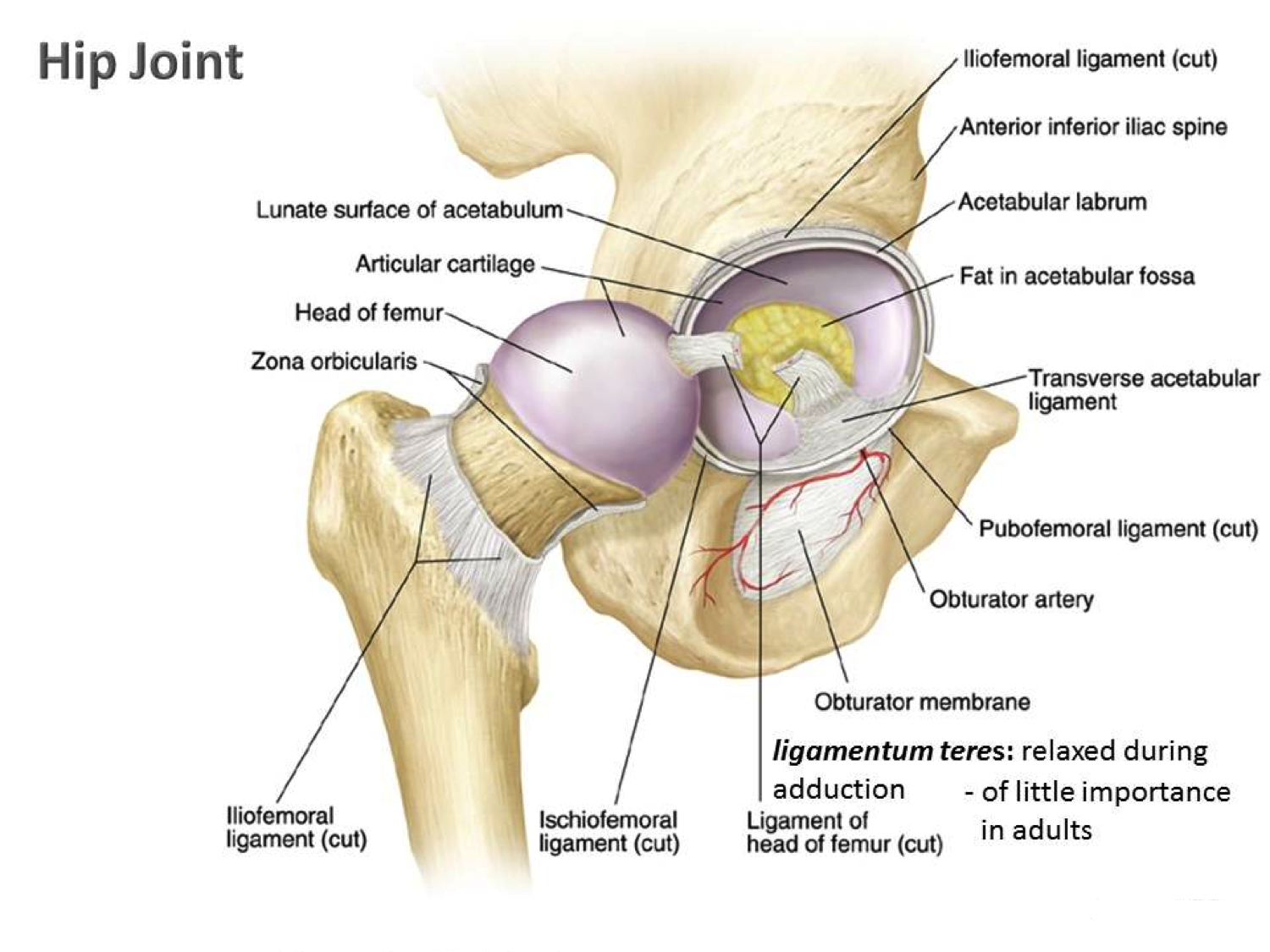 The fascia lata is an extremely malleable fabric for multiple surgical purposes.
The fascia lata is an extremely malleable fabric for multiple surgical purposes.
Clinical Significance
The fascia lata holds particular clinical significance for a variety of reasons. In orthopedics, the fascia lata, superolateral mass, is used as an important landmark for surgical approaches. It is to be closed as the deepest layer of fascia is total hip arthroplasties secondary to the hip capsule being removed. It acts as a pseudo-capsule to maintain the structural stability of the prosthetic hip. The term “snapping hip” was coined to describe ITB laxity that “snaps” over the greater trochanter of the femur.[10] FL is often released to lengthen the ITB, thus correcting the imbalance of motion. In obstetrics and gynecology, the FL on the superomedial border serves as a landmark when performing vulvar procedures and pudendal injections.[11] It was historically used as an allograft for pubovaginal slings in females with pelvic floor laxity.[12] Dermatologists have even used FL allografts to improve facial muscle function in cases of facial paralysis.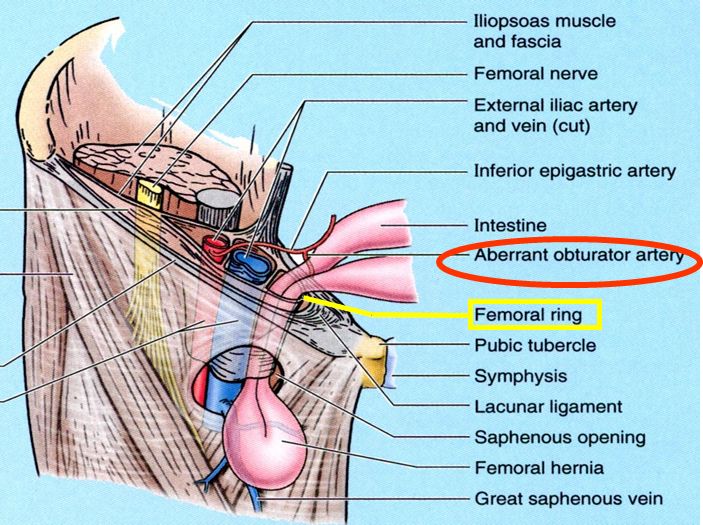 [1] The clinical significance of the FL cannot be understated. Hip pain is common and can be present in 14% of orthopedic complaints, lateral knee pain is common across all age groups, and the ability to reinforce pelvic floor pathology is life-changing.[13] The FL is linked to all of these conditions but requires distinguishing from the ITB and the TFL.
[1] The clinical significance of the FL cannot be understated. Hip pain is common and can be present in 14% of orthopedic complaints, lateral knee pain is common across all age groups, and the ability to reinforce pelvic floor pathology is life-changing.[13] The FL is linked to all of these conditions but requires distinguishing from the ITB and the TFL.
An inflammation from biomechanical causes of the fascia lata at the level of the iliac crest can cause structural alterations, such as thickening or weakening until partial rupture.
Other Issues
Often used interchangeably with TFL and ITB, the tensor fascia is, in fact, a separate anatomical structure. The importance of understanding the difference in these structures is essential to preoperative planning, alternative treatments, and therapy for lateral compartment stabilization of the thigh. Using the proper terminology and differentiating anatomic structure will increase the inter-observer reliability in future studies, improve surgical outcomes, and allow the physician to educate their patient effectively.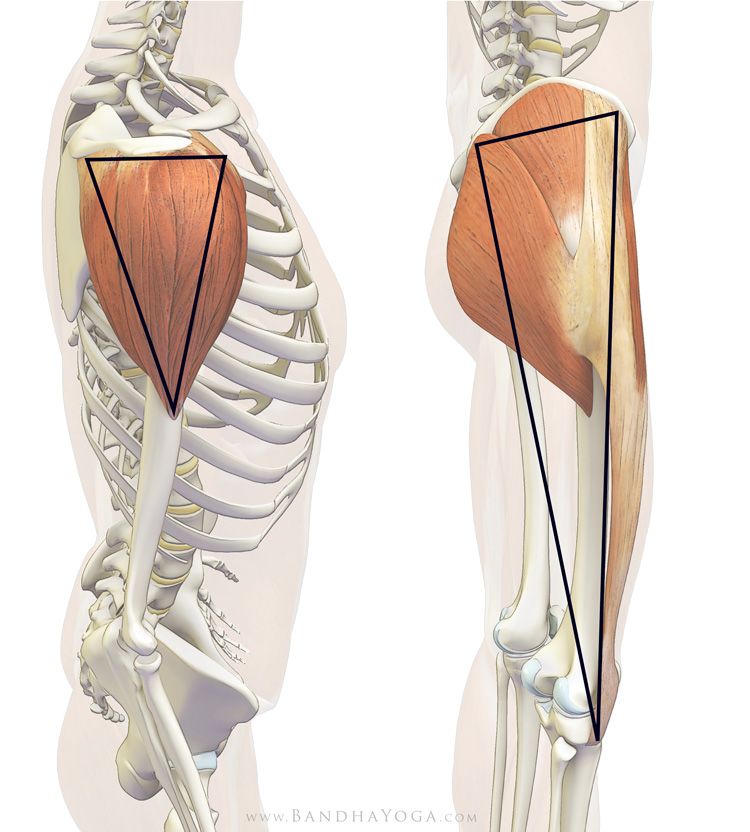
Review Questions
Access free multiple choice questions on this topic.
Comment on this article.
Figure
Muscles and Fascia of the Abdomen, Fascia Lata, Obliques Internus, Inguinal Ligament, Spinal Cord, Aponeurosis of External Obliques, Sheath of Rectus, Cremaster, Falx inguinal, Reflected INguinal Ligament. Contributed by Gray’s Anatomy Plates
Figure
Tensor Fasciae Latae Muscles, Abductor of the Thigh, Thoracic Vertebrae, Quadratus Lumborum, Psoas Minor and Major, Crest of Ilium, Anterior Superior Spine, Iliacus, Tensor Fascia Latae, Sartorius, Pectineus, Adductor Longus, Gracilis, Adductor Magnus, (more…)
Figure
Cribriform Fascia, Aponeurosis of Obliques Externus, Anterior Superior Spine, Inguinal Ligament, Fascia Lata,. Contributed by Gray’s Anatomy Plates
References
- 1.
Burres S. Midface volume replacement with a transmaxillary implant. Aesthetic Plast Surg. 2005 Jan-Feb;29(1):1-4; discussion 5.
 [PubMed: 15580433]
[PubMed: 15580433]- 2.
Hyland S, Graefe SB, Varacallo M. StatPearls [Internet]. StatPearls Publishing; Treasure Island (FL): Aug 8, 2022. Anatomy, Bony Pelvis and Lower Limb, Iliotibial Band (Tract) [PubMed: 30725782]
- 3.
Clar DT, Bordoni B. StatPearls [Internet]. StatPearls Publishing; Treasure Island (FL): Sep 12, 2022. Anatomy, Abdomen and Pelvis: Femoral Region. [PubMed: 30860736]
- 4.
Elzanie A, Borger J. StatPearls [Internet]. StatPearls Publishing; Treasure Island (FL): Mar 28, 2022. Anatomy, Bony Pelvis and Lower Limb, Gluteus Maximus Muscle. [PubMed: 30855781]
- 5.
Singh O, Al Khalili Y. StatPearls [Internet]. StatPearls Publishing; Treasure Island (FL): Aug 8, 2022. Anatomy, Back, Lumbar Plexus. [PubMed: 31424721]
- 6.
Gandbhir VN, Lam JC, Rayi A. StatPearls [Internet]. StatPearls Publishing; Treasure Island (FL): Oct 6, 2022. Trendelenburg Gait. [PubMed: 31082138]
- 7.

Varacallo M, Luo TD, Johanson NA. StatPearls [Internet]. StatPearls Publishing; Treasure Island (FL): Sep 4, 2022. Total Hip Arthroplasty Techniques. [PubMed: 29939641]
- 8.
Deak N, Varacallo M. StatPearls [Internet]. StatPearls Publishing; Treasure Island (FL): May 8, 2022. Hip Precautions. [PubMed: 30725716]
- 9.
Biondi NL, Varacallo M. StatPearls [Internet]. StatPearls Publishing; Treasure Island (FL): Aug 8, 2022. Anatomy, Bony Pelvis and Lower Limb: Vastus Lateralis Muscle. [PubMed: 30335342]
- 10.
Yen YM, Lewis CL, Kim YJ. Understanding and Treating the Snapping Hip. Sports Med Arthrosc Rev. 2015 Dec;23(4):194-9. [PMC free article: PMC4961351] [PubMed: 26524554]
- 11.
Yoshida S, Onogi A, Kuwahara M, Uchiyama T, Kobayashi H. Clear Cell Adenocarcinoma Arising from Endometriosis in the Groin: Wide Resection and Reconstruction with a Fascia Lata Tensor Muscle Skin Flap. Case Rep Obstet Gynecol.
 2018;2018:2139595. [PMC free article: PMC5899860] [PubMed: 29805826]
2018;2018:2139595. [PMC free article: PMC5899860] [PubMed: 29805826]- 12.
Bent AE. Sling and bulking agent placement procedures. Rev Urol. 2004;6 Suppl 5(Suppl 5):S26-46. [PMC free article: PMC1472872] [PubMed: 16985906]
- 13.
Battaglia PJ, D’Angelo K, Kettner NW. Posterior, Lateral, and Anterior Hip Pain Due to Musculoskeletal Origin: A Narrative Literature Review of History, Physical Examination, and Diagnostic Imaging. J Chiropr Med. 2016 Dec;15(4):281-293. [PMC free article: PMC5106442] [PubMed: 27857636]
Disclosure: Tucker Peabody declares no relevant financial relationships with ineligible companies.
Disclosure: Bruno Bordoni declares no relevant financial relationships with ineligible companies.
Fascia lata thigh
Fascia lata femur , f.
lata, covers the muscles of the thigh.
Attached: iliac crest
inguinal ligament, pubic symphysis,
ischium, gluteal fascia
fascia of the lower leg and popliteal fascia.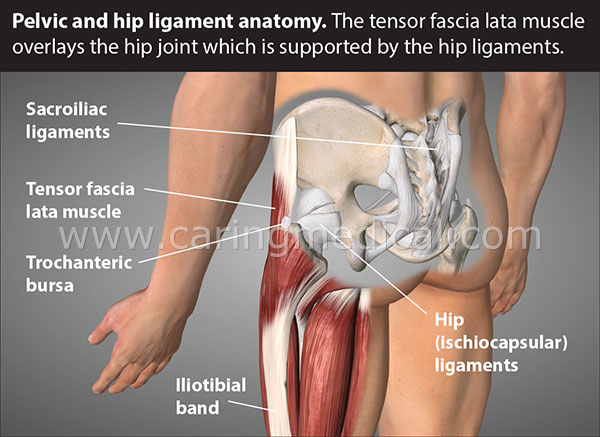
Deep plate – iliopectineal
fascia (covers the iliopsoas)
muscle and pectineus muscle). In her
iliopectineal groove (femoral
artery and femoral vein).
Surface plate has
subcutaneous fissure, hiatus
saphenus, in which
great saphenous vein of the leg. The gap is closed
ethmoid fascia, fascia
cribrosa, with numerous
openings for blood vessels and nerves.
The cribriform fascia is limited: sickle-shaped
edge (margo falciformis),
upper and lower horns (cornu
superius et
inferius).
Intermuscular septa : lateral
(anterior group from posterior), medial
(anterior from medial) and posterior
(medial group from posterior).
Forms iliotibial
tract , tractus iliotibialis
(tendon for tensor wide
fascia).
Femoral triangle , trigonum
femorale , limited to:
from above – inguinal ligament, laterally
– tailor muscle, medially – long
adductor muscle. In him –
In him –
iliopectineal groove,
passing into the femoral groove (long
and large adductor muscles – medial
broad thigh muscle). Femoral groove
passes into the adductor channel, the input
the opening of which is hidden under the tailor
muscle.
adductor channel , canalis
adductorius . Medial
the wall is a large adductor muscle.
Lateral wall – medial wide
thigh muscle. Anterior wall – fibrous
plate between the large adductor
muscle and wide medial muscle
hips. Holes: inlet (continued
femoral groove), output (tendon
gap – on the back of the thigh, in
popliteal fossa, between tendon bundles
adductor major), third
(anterior – in the fibrous plate). IN
canal pass: femoral artery,
vein and saphenous nerve.
Popliteal fossa , fossa
poplitea diamond-shaped.
Upper corner – biceps and semimembranosus
muscles. The lower corner is the medial and
lateral head of the gastrocnemius muscle.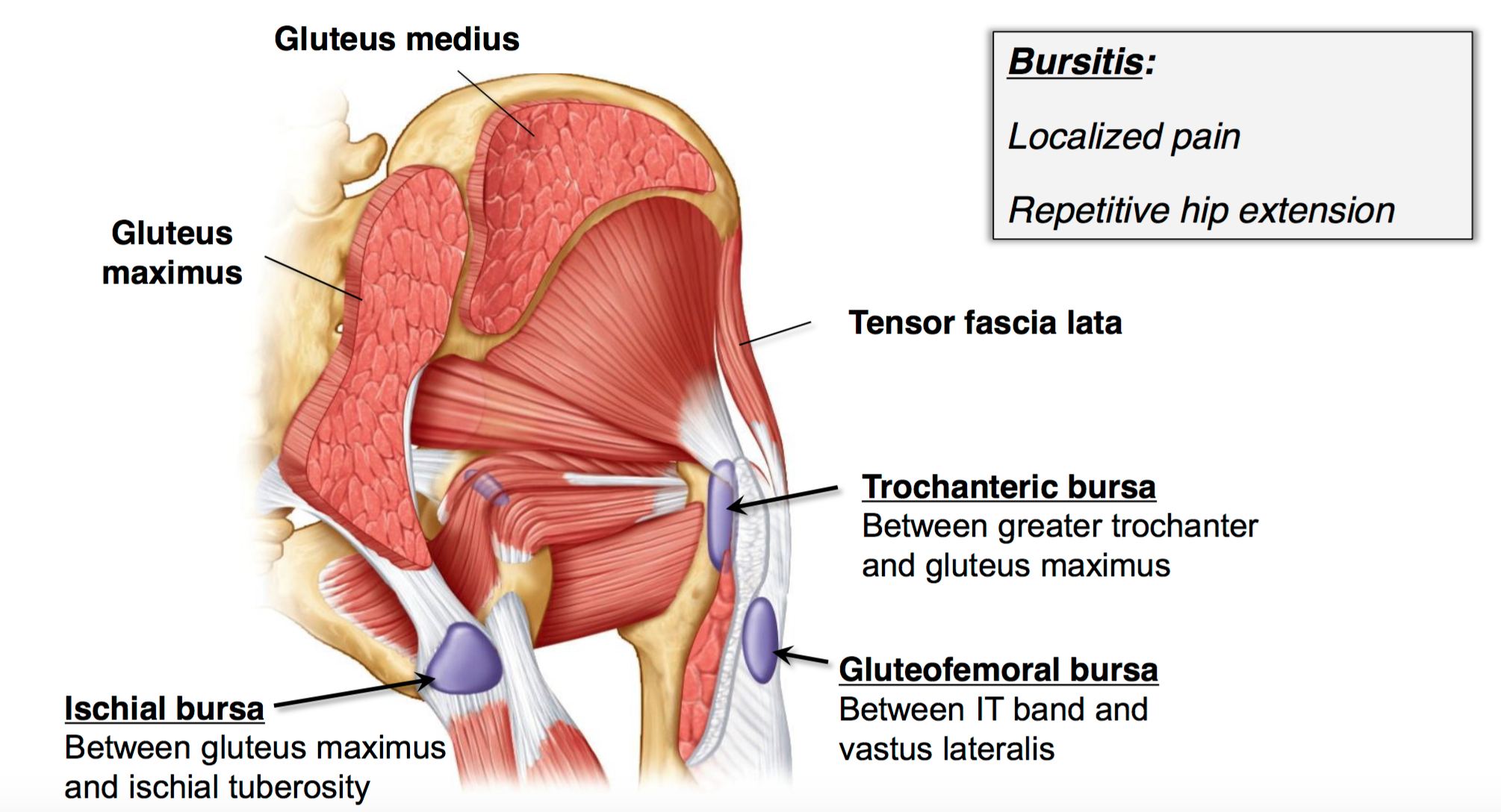
Bottom – popliteal surface of the femur
bones and knee joint. In the hole are:
nerves, circulatory and lymphatic
blood vessels, lymph nodes.
Ankle-popliteal canal , canalis
cruropopliteus , rear
shin area, between superficial
and deep muscles, from the popliteal
fossa to the calcaneal tendon. Front
wall – posterior tibial muscle,
below – long flexor of the large
toe. back wall – front
surface of the soleus muscle.
Holes: inlet (front – popliteal
muscle, behind – soleus muscle),
anterior (proximal part of the interosseous
shin membranes) lower opening
(distal third of the leg, where the soleus
the muscle passes into the tendon). in the channel
pass – posterior tibial
artery, veins, tibial nerve.
Inferior musculoperoneal canal
(branch of the ankle-popliteal canal).
Walls: front – back surface
fibula, behind – long
flexor of the big toe. IN
channel pass: peroneal artery
and veins.
Superior musculoperoneal canal
– in the upper third of the leg, between the lateral
surface of the fibula and
peroneus longus muscle.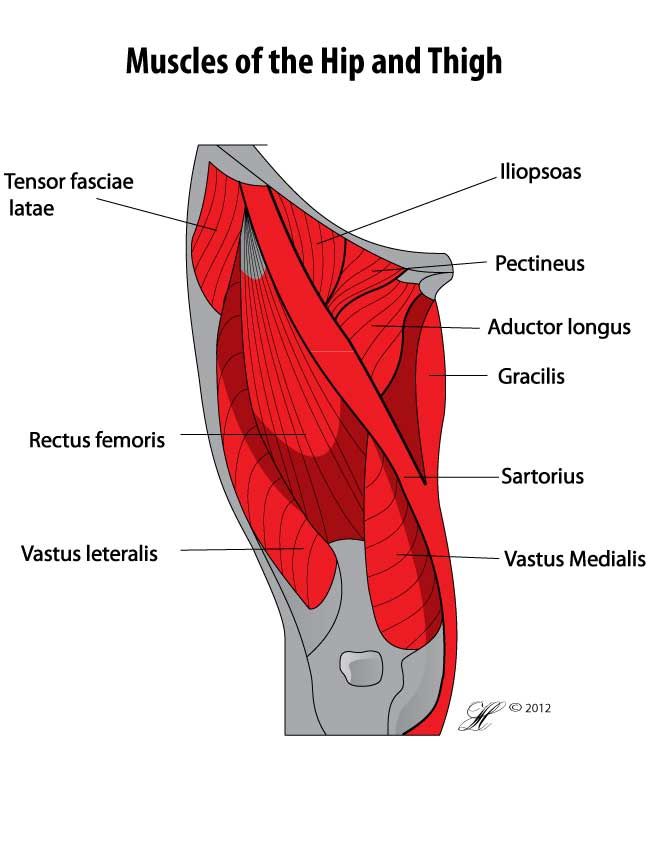 in the channel
in the channel
passes superficial peroneal
nerve.
Muscle gap , lacuna
musculorum . front and
above – inguinal ligament, behind –
ilium, medially
iliopectineal arch. Through her
iliopsoas muscle comes out
along with the femoral nerve.
Vascular lacuna , lacuna
vasorum . front and
above – inguinal ligament, behind and below
– pectinate ligament, laterally –
iliopectineal arch, medially
– lacunar ligament. They pass through it
femoral artery and vein, lymphatic
vessels.
Fascia lata – e-Anatomy – IMAIOS
SUBSCRIBE
SUBSCRIBE
Definition
English
No definition for this anatomical structure yet
Definition for:
English
I agree to the assignment of the rights associated with my participation in the project, in accordance with the Terms and conditions of use of the site.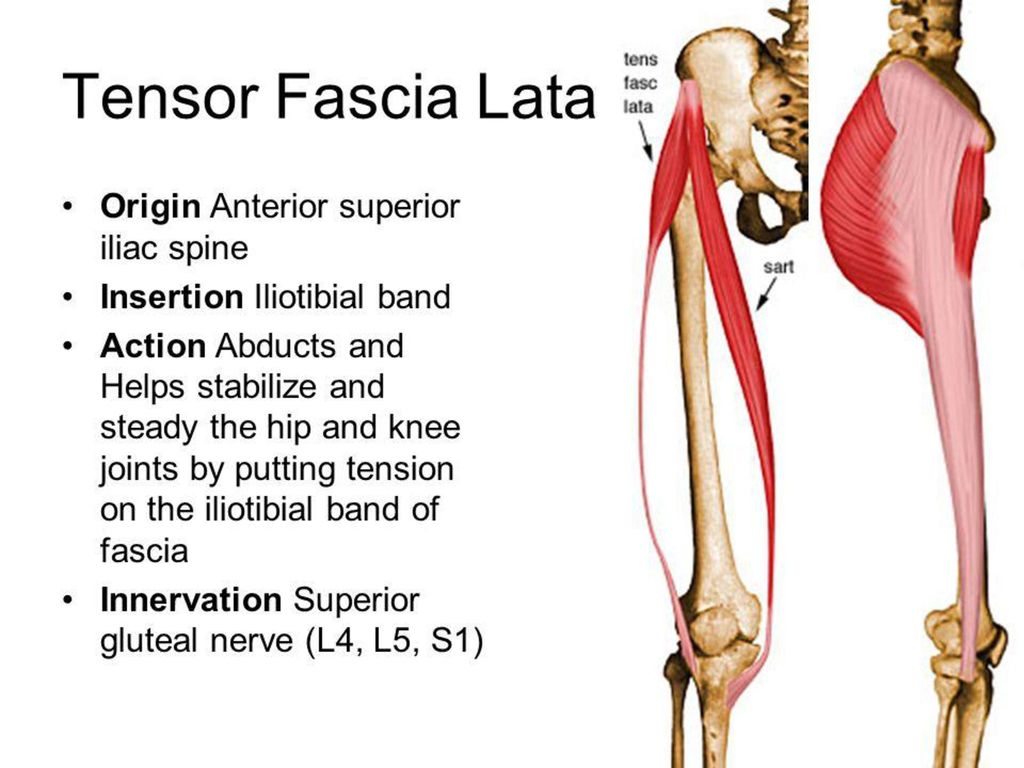
I agree to the assignment of the rights associated with my participation in the project, in accordance with the Terms and conditions of use of the site.
Gallery
Comparative anatomy of animals
- Fascia lata
Translations
IMAIOS and certain third parties use cookies or similar technologies, in particular for audience measurement.

 [PubMed: 15580433]
[PubMed: 15580433]
 2018;2018:2139595. [PMC free article: PMC5899860] [PubMed: 29805826]
2018;2018:2139595. [PMC free article: PMC5899860] [PubMed: 29805826]